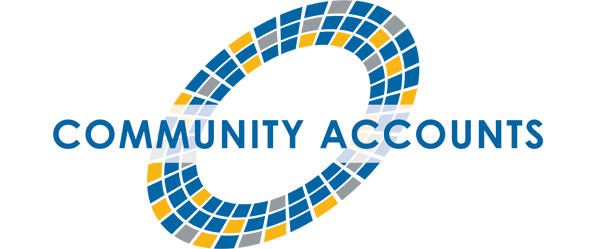Information contained within Community Accounts is separated by Account. These Accounts each represent an aspect of the structural framework making up the concepts explored in the Indicators and Well-Being area of the site.
Red Lake Profile |
Demographics
Total Population
The 2021 Census population for Red Lake was 4,095. This represents a decline of 0.2% since 2016. Over the same period, the entire province experienced a population increase of 5.8% since 2016.Marital Status
The number of people in Red Lake who were married or living common law in 2021 were 2,010.Immigration
In Red Lake, 8.8% of the population are immigrants, compared to 4.0% for Kenora, 29.1% for the province and 21.9% nationally.Francophone Population
In Red Lake, 4.1% identified French as their mother tongue in 2021 (single or multiple response), compared to 20.9% nationally. Of those who spoke a single mother tongue, 3.5% identified French as their mother tongue in 2021 compared to 20.5% nationally. Information about the population who spoke multple mother tongues and identified French as one of them in 2021 was not available for Red Lake.Indigenous Population
In 2021, there were 950 indigenous a people in Red Lake. This accounted for 23.6% of the total population, compared to 21.9% in 2016. In 2021, there were 32,355 indigenous a people in Kenora (the associated Census Division). This accounted for 49.8% of the total population, compared to 49.2% in 2016. Nationally 5.0% of the population identified as indigenousa in 2021.Income, Consumption, and Leisure
Individual Income, Census 2021
The before tax median total income for households in Red Lake was $111,000 according to the 2021 Census. The after tax median income for households in Red Lake was $93,000 according to the 2021 Census.Gross and After Tax Personal Income Per Capita
The 2015 gross income for every man, woman, and child (gross personal income per capita) in Kenora (the census division which contains Red Lake) was $29,400. For the province, gross personal income per capita was $37,400.
After tax personal income per capita, adjusted for inflation, was $20,400 for Kenora (the census division which contains Red Lake) in 2015. For the province, after tax personal income per capita was $23,400.
Education, Literacy, Skills and Training
Highest Level of Education
15 years of age and over
The 2021 Census reported that 18.4% of people 15 years of age and older in Red Lake do not have a high school diploma compared to 15.3% of people in the entire province.
In Red Lake about 81.6% of people aged 15 and over had at least a High School diploma in 2021 compared to 84.7% in the province as a whole. In Red Lake about 17.5% of those people aged 15 and over had a Bachelor's Degree or higher in 2021 compared to 29.9% in the province as a whole.25 to 64 years of age
The 2021 Census reported that 11.4% of people 25 to 64 years of age in Red Lake do not have a high school diploma compared to 8.8% in the province as a whole.
In Red Lake about 88.6% of people aged 25 to 64 had at least a High School diploma in 2021 compared to 91.2% in the province as a whole. In Red Lake about 22.0% of people aged 25 to 64 had a Bachelor's Degree or higher in 2021 compared to 36.8% in the province as a whole.Employment and Working Conditions
Labour Force Rates
In Red Lake, during the reference week of the 2021 Census (May 2-8, 2021), the employment rate for those aged 15 years and older was 63.2% (55.1% for Ontario). During the same period the unemployment rate for Red Lake was 5.1% (12.2% for Ontario). There were 2,170 (7,399,200 for Ontario) individuals participating in the labour force.
Health
Health Status
A major indicator of well-being is how a person rates their own health status. In 2013-2014, 57.8% (+/- 4.9%) of individuals age 12 and over in Northwestern Health Unit, Ontariob rated their health status as excellent or very good.
In Ontario, 59.5% (+/- 0.8%) of individuals age 12 and over rated their health status as excellent or very good.
Mental Health
A major indicator of well-being is how a person rates their own mental health status. In 2013-2014, 68.7% (+/- 6.9%) of individuals age 12 and over in Northwestern Health Unit, Ontariob rated their mental health status as excellent or very good.
In Ontario, 70.7% (+/- 0.8%) of individuals age 12 and over rated their mental health status as excellent or very good.
Smoking
The rate of smoking (current daily smokers) among those 12 years of age and older in Northwestern Health Unit, Ontariob in 2013-2014 was 16.0% (+/- 4.5%). The rate for Ontario was 13.3% (+/- 0.6%).
21.1% (+/- 5.2%) of those 12 years of age and older in Northwestern Health Unit, Ontariob reported they smoked daily or occasionally. The rate for Ontario was 17.7% (+/- 0.6%).
Drinking
The percentage of people in Northwestern Health Unit, Ontariob who reported heavy drinking in 2013-14 was 21.2% (+/- 4.1%). Heavy drinking is defined as males having 5 or more drinks, or women having 4 or more drinks, on one occasion, at least once a month in the past year. The rate for Ontario was 16.7% (+/- 0.6%).
Data Sources and Footnotes
a Responded with Aboriginal Identity in Census 2021
b PHU Offset Used
Data compiled by the Community Accounts Team based on custom tabulations from the following:| Demographics: | Census of Population 2006 - 2021, Statistics Canada. |
| Income, Consumption and Leisure: | Canada Customs and Revenue Agency summary information as provided by Income Statistics Division, Statistics Canada.
National Household Survey 2011, Statistics Canada. |
| Education, Literacy, Skills and Training: | National Household Survey 2011, Statistics Canada. |
| Employment and Working Conditions: | National Household Survey 2011, Statistics Canada. |
| Health: | Canadian Community Health Survey (CCHS), Statistics Canada. |

 providing INFORMATION
providing INFORMATION 